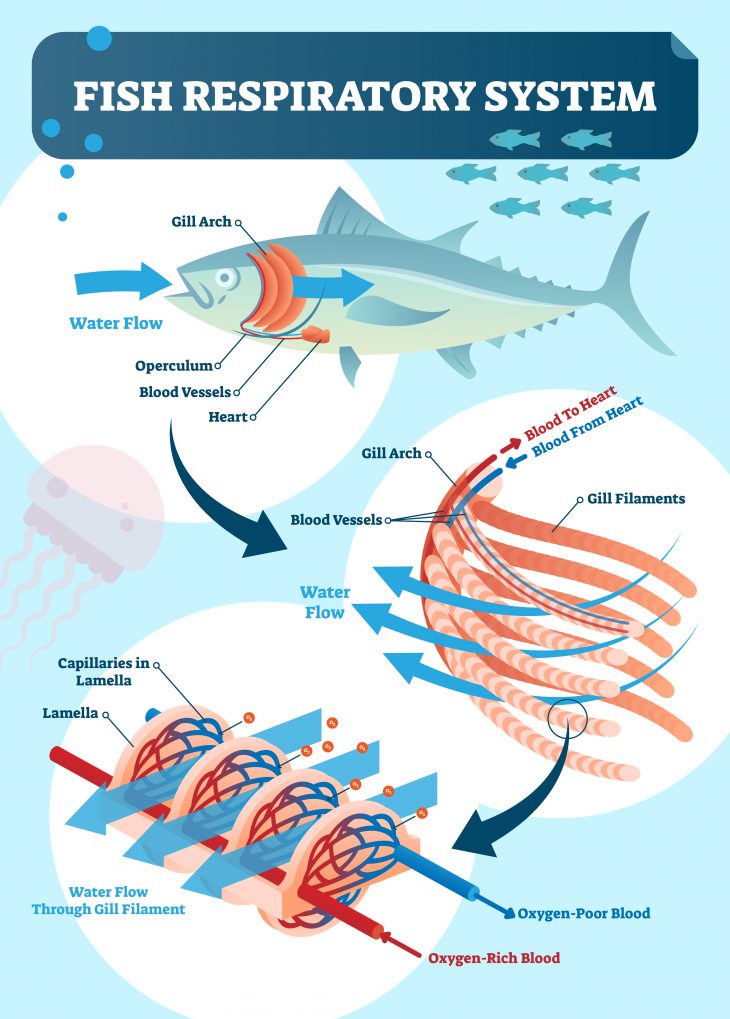Why Your Fish Can Drown in Water Explained

Fish can drown when the water does not have enough oxygen. Also, fish can die from lack of oxygen in fish tanks that do not have an appropriate filtration.
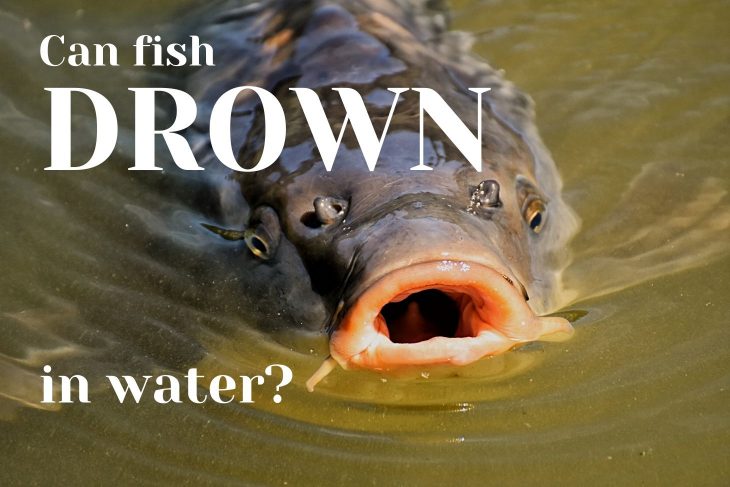
It sounds like a strange question but once I started to think about it, I just had to find out whether it’s possible for a fish to drown. Flicking through biology books and trawling through educational sites has led me to the answer and to be honest, I’m surprised.
Can fish drown? Fish can drown when the water does not have enough oxygen. By definition it’s more suffocation than drowning as the fish does not die from inhaling water. Fish can die from lack of oxygen in overpopulated water and in fish tanks that do not have a running filtration system.
It’s not as simple as a fish ‘drowning’, after all they don’t have lungs and are constantly taking in gulps of water without ill effect. Despite living their lives underwater, fish need oxygen to survive so let’s take a look at how they thrive below the surface and how they absorb oxygen. This will help us understand what can lead to a fish suffocating while still underwater.
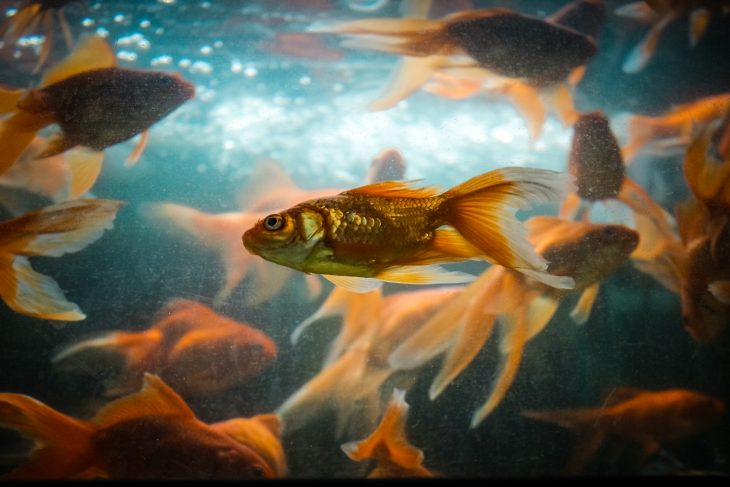
How Does a Fish Breathe Underwater?
Did you know that not everything that lives in the ocean is able to breathe underwater? Take a look at dolphins for example, they hold their breath when underwater and come to the surface to breathe. However, fish are different as they have gills meaning they are able to breathe when below the surface.
Just like we are able to get oxygen out of air, fish are able to get oxygen out of water thanks to their gills. Fish take water into their mouth in gulps and this passes through the feathery gill filaments which is where the oxygen is absorbed into the bloodstream. The water then passes out through the other side of the gills.
6 Facts You Didn’t Know
- Fish can suffocate in water (also sometimes referred to as drowning)
- Fish need oxygen levels in water to be two parts per million or more to survive
- They are cold blooded so have a slower metabolism and therefore need less oxygen than warm-blooded animals
- Fish use their gills to extract oxygen from water
- They do not have lungs
- Fish are more likely to suffocate or ‘drown’ in tanks and aquariums than in nature
How Do Gills Work?
Gills are essential for fish to absorb oxygen. However, oxygen can only be absorbed if the oxygen level in the water is higher than the oxygen levels in the blood.
The gills do something called a ‘countercurrent oxygen exchange’ which is a way of ensuring they absorb as much oxygen as possible. They maximize the amount of oxygen by ensuring the blood flow through the gills is in the opposite direction to the water flowing over them.
This means that as the blood flows through the gills, oxygen is continuously picked up as the oxygen rich water is meeting the high-oxygen blood and low-oxygen blood meets low-oxygen water (the water still has more oxygen than the blood so oxygen continues to be passed into the bloodstream).
If the blood and the water flowed in the same direction the low-oxygen blood would meet the high-oxygen water and the blood and water oxygen levels would quickly become the same causing the absorption process to stop. The countercurrent system ensures 90% of the oxygen in the water is absorbed.
The gills are made up of epithelium which are delivered deoxygenated blood by arteries. As water is passed from the mouth to the gills, oxygen is absorbed by the blood vessels and veins. During this process carbon dioxide is also released.
Most fishes have four gills on each side of their body, the way they filter water over the gills varies depending on the species. Many fish do this by widening their mouth to push water over the gills while others, including shark species, ensure they have water over the gills by continuously swimming forward.
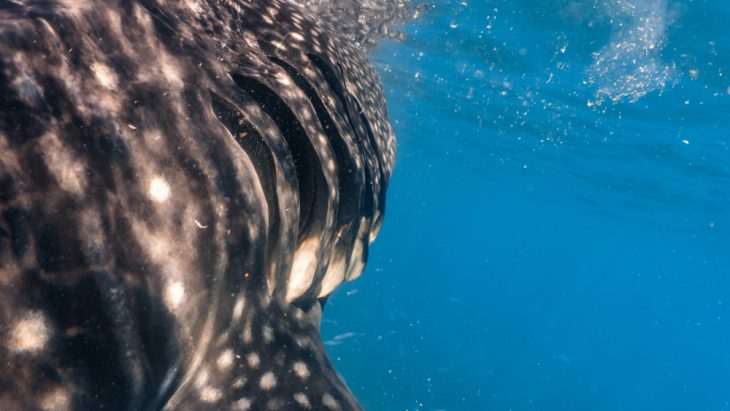
Is There Oxygen in Water?
There is dissolved oxygen in water, however there’s considerably less oxygen in water than in air, so fish gills need to be very effective at absorbing the available oxygen. Air has around 210,000 parts per million of oxygen while water has between 4 and 8 parts per million of oxygen. This is a considerable difference but according to US Fish and Wildlife Service many fish do well in waters where the dissolved oxygen is five parts per million or more.
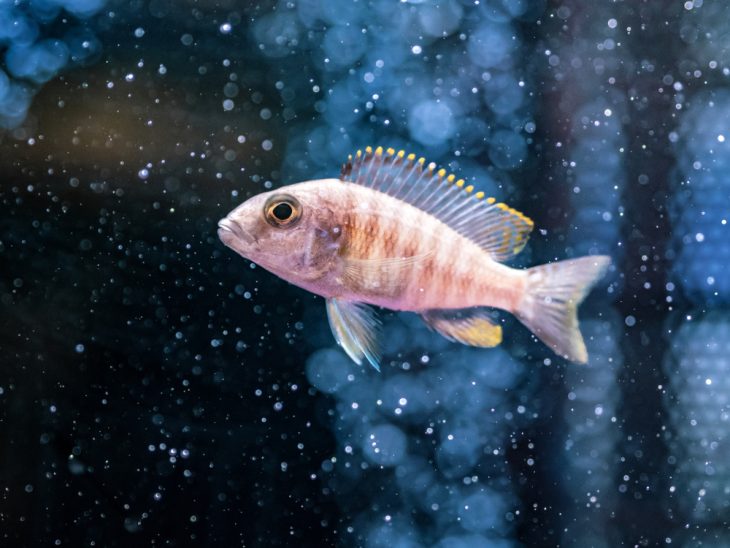
The Difference Between Drowning and Suffocating
Saying that a fish can drown is slightly misleading as the verb drown is defined by the Oxford Dictionary as ‘die through submersion in and inhalation of water’. When a human inhales water it goes into our lungs and we drown as we cannot get oxygen.
This is not the same as what happens to a fish. They die due to a lack of oxygen which is more likely to fall under suffocation which is a verb defined as ‘die from lack of air or inability to breathe’.
Why Would a Fish Suffocate?
If the water the fish is living in has a dissolved oxygen level of two or less parts per million there is a high risk of the fish suffocating. This is unlikely to occur in a natural environment but in tanks and aquariums it happens all too easily.
This is why air pumps and filtration systems are necessary in tanks to keep water oxygenated.
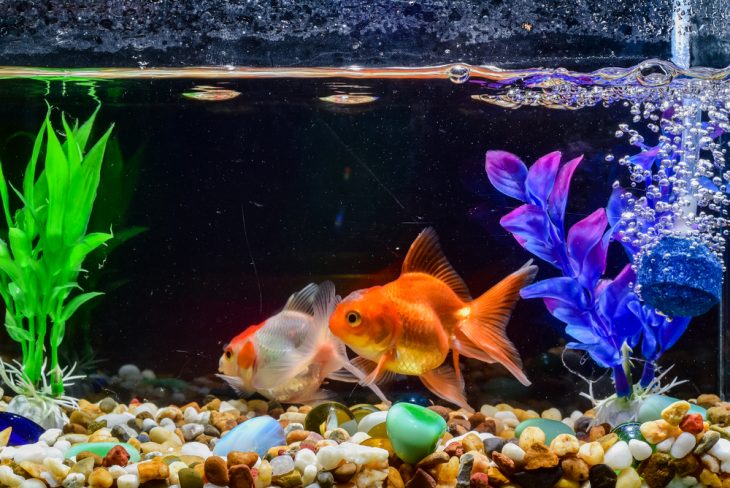
Causes of Low Oxygen Levels in Fish Tanks
There are multiple reasons the oxygen levels of the water may be low in a captive environment, the most common causes are:
- Overpopulation
- Live plants (particularly in dark tanks)
- Low light levels
- Excess waste
- Elevated water temperature
- Certain chemicals
How to Know if Oxygen Levels are Low
A fish living in an environment where the oxygen levels are not optimal may show the following signs:
- Moving around less
- Eating less
- Spending more time around the surface and gasping
- Labored breathing
- Rapid gill movement
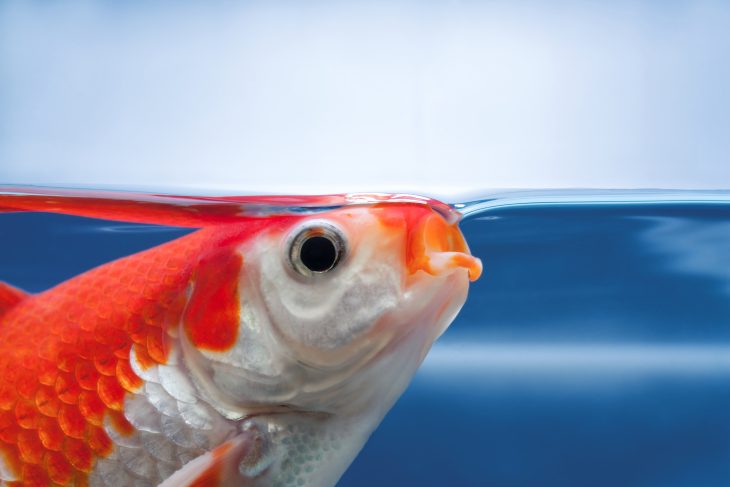
If you look after fish and you see the signs of low oxygen levels, your fish are on the verge of ‘drowning’ (suffocating). Swift action is needed to prevent this. The first thing to change is the water, you can switch as much as 50% and this will provide immediate relief as the new water will be higher in oxygen. This will then buy you enough time to find the root of the problem and make the appropriate changes.
The most common cause of low oxygen levels is overcrowding within tanks. Having too many fish in an aquarium is often the root cause of the issue and also contributes to the other factors mentioned above. Due to this the overcrowding should be dealt with in order to resolve the issue as otherwise the changes you make will provide only temporary relief.
Other Causes of ‘Drowning’
Low oxygen levels in the water is not the only reason a fish may ‘drown’. The fish may have a problem that means they are unable to process the available oxygen. If the environment is healthy and the other fish are thriving, it could come down to a health issue.
There may be damage or disease impacting the gills which will compromise the fish’s ability to breath. If the gills are damaged they have a higher likelihood of suffocating, gill damage can occur due to attacks from predators or even chemical damage.
Some species of fish rely on constantly swimming forward to ensure water is passing over their gills, if they stop swimming (for example they are trapped) or are dragged backwards they may suffocate.
Natural Causes of Low Oxygen Levels
Although it’s far less likely to occur, there are instances that fish suffocate due to lack of oxygen in nature too. Some examples of this include:
- Algae blooms – an algae bloom can cause the amount of available oxygen to plummet. When the algae dies and decomposes the process consumes dissolved oxygen and the decrease in available oxygen negatively impacts aquatic life.
- Decomposing plants – submerged plants that die and decompose can also contribute to low dissolved oxygen levels. The decomposition process is called Carbonaceous Biochemical Oxygen Demand (CBOD).
- Chemical and Crop runoff – runoff from various sources can cause changes in the oxygen, nutrient and pollution levels in water which can also impact aquatic life.
When the conditions are not optimal, fish can suffocate but can anything else impact their ability to breathe? A few common questions are answered below:
Can a fish survive out of water?
Fish are specialized to survive in water, once removed from water they are unable to extract oxygen from the air and will suffocate. As a general rule of thumb, a fish can survive out of water for as long as their gills are still moist.
The common understanding is that a fish should never be out of water for more than 10 minutes and most would not survive this length of time in dry conditions. Some fish species die within minutes when they are removed from water while others can last hours before suffocating.
If a fish is able to survive temporarily out of water, it is important to realize that they won’t be able to move or eat when on land so they will not survive for long.
Do All Fish React the Same to Being Out of Water?
Some species of fish are able to survive out of water longer than others. The following are able to last longer out of water thanks to cool adaptations such as specialized skin that allows them to absorb oxygen from the air and even extra organs that help the gills to obtain oxygen out of water:
Mudskippers
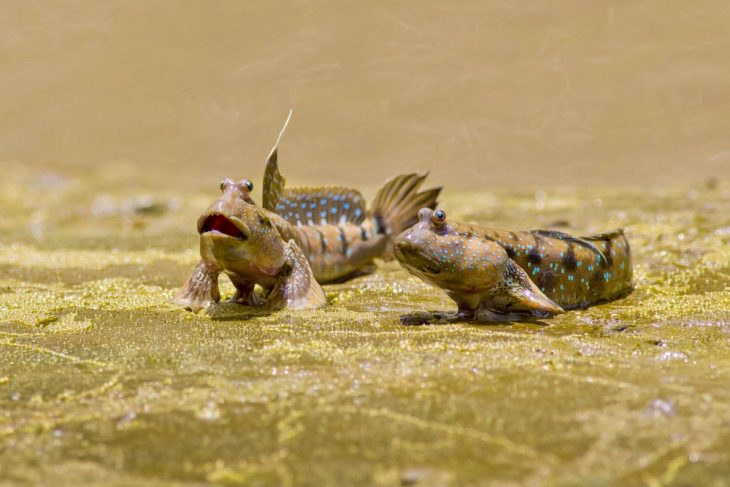
The mudskipper is actually able to live out of water, its skin has blood vessels close to the surface so they can absorb oxygen from the air into the bloodstream.
Mangrove Rivulus
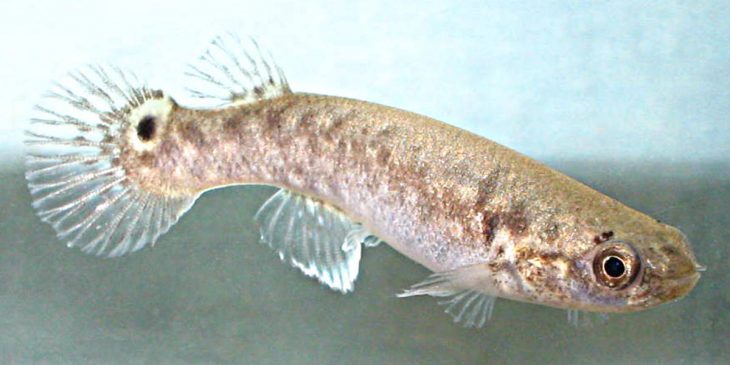
source: Wikipedia
The mangrove rivulus has also adapted to be able to breathe air through their skin when they are out of water. They are known to jump out of water when it becomes too warm.
The Walking Catfish
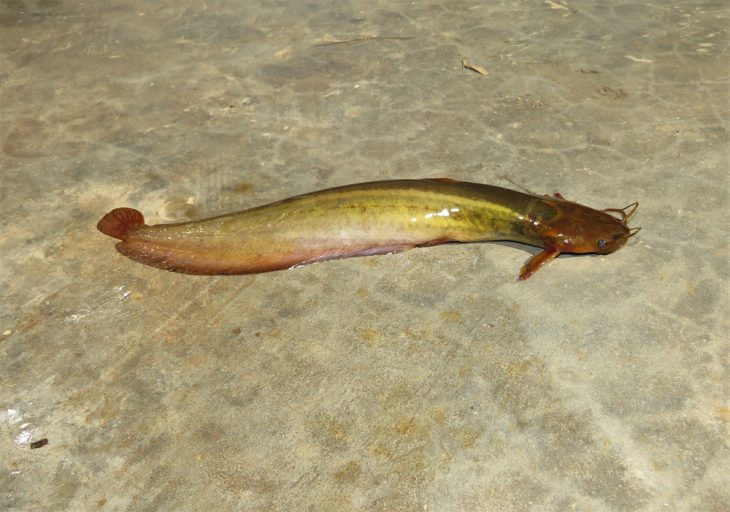
Uniquely, the walking catfish has an extra organ that helps them absorb oxygen from the air. They also have the ability to ‘walk’ by using their pectoral fins to push themselves along.
Eels
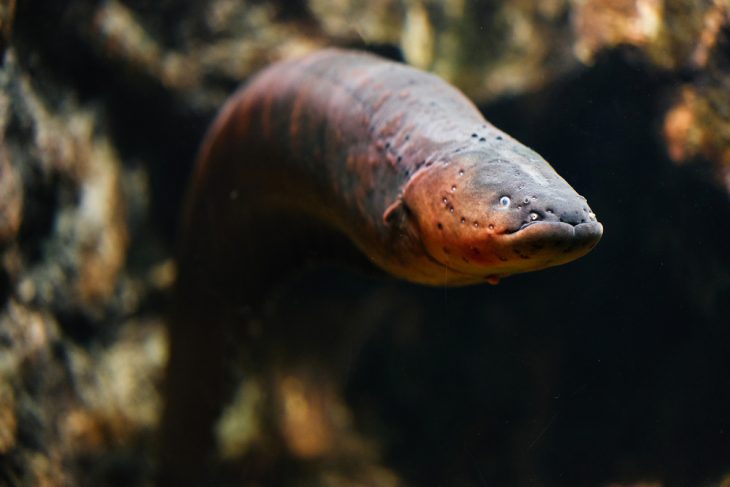
West African Lungfish
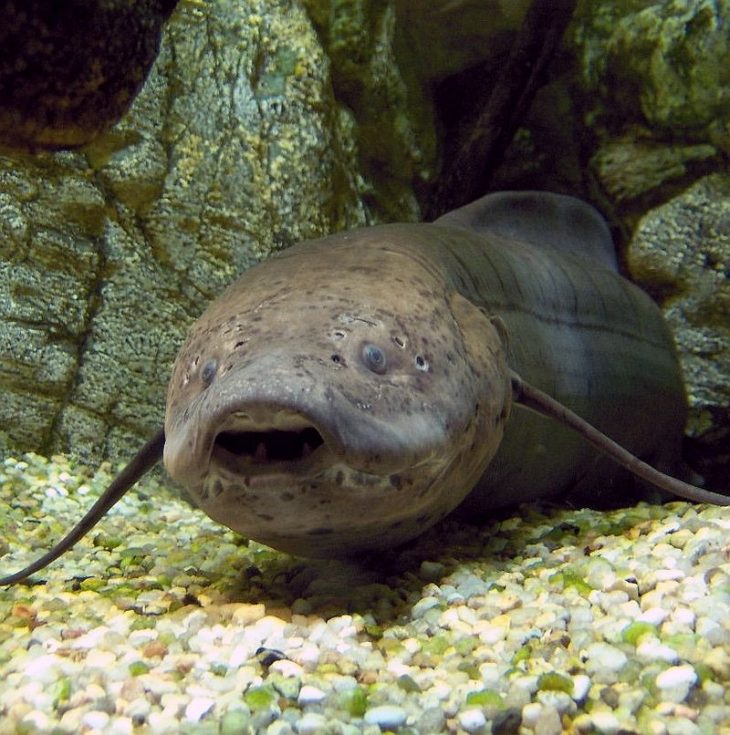
source: Wikipedia
Killifish
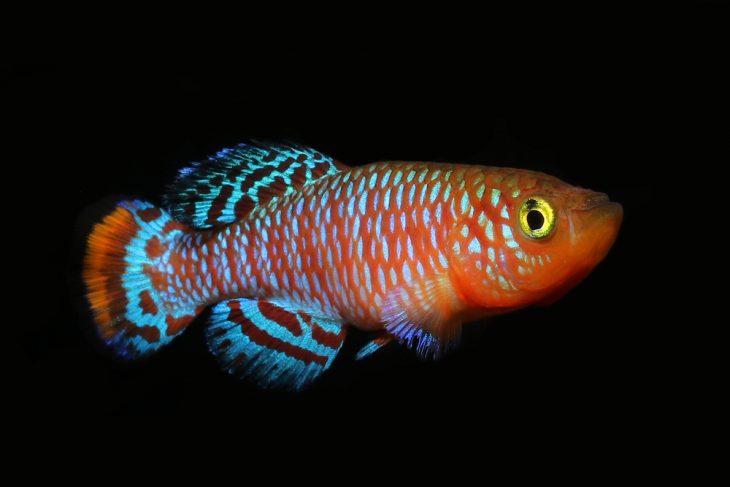
Is There Such a Thing as Too Much Oxygen?
Excessive oxygen intake can also cause death to fish. They need a balance between the intake of oxygen and hydrogen in order to survive so sudden exposure to high levels of oxygen can be lethal.
In Summary
Fish can’t really drown but they can suffocate and it seems the two words are used interchangeably when it comes to this topic. This is probably because people think of the fish not being able to breathe and because a human would drown underwater that’s what they think has happened to a fish that is unable to breath underwater.
There are multiple factors that can cause a fish to suffocate, but most often it is low oxygen levels due to a poorly managed captive environment. Oxygen levels are an important consideration for any fish owner or aquarium. By carefully managing the environment and ensuring the tank is not overcrowded you can make sure the oxygen levels are good for your fish.
